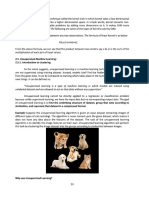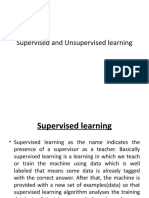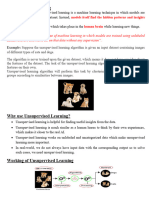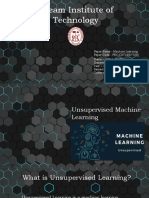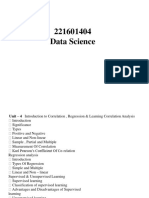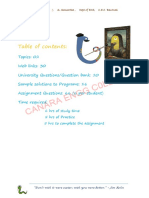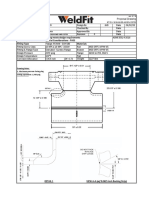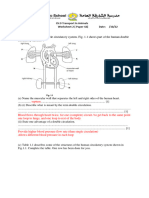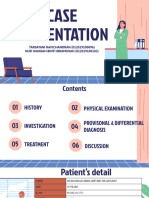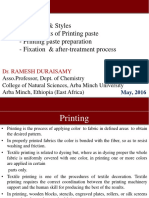0% found this document useful (0 votes)
90 views10 pagesUnsupervised Learning: Harsha Vardhan Reddy Burri
Unsupervised learning involves identifying hidden patterns in data without labeled outputs or targets. The main goals are to prepare clusters of similar data points and estimate the density of data distribution in the feature space. Common unsupervised learning techniques include k-means clustering, which groups data points into k clusters based on minimizing distances to centroid points, and hierarchical clustering, which builds nested clusters based on similarity. Unsupervised learning has applications in areas like market analysis, biology, and web mining.
Uploaded by
T RCopyright
© © All Rights Reserved
We take content rights seriously. If you suspect this is your content, claim it here.
Available Formats
Download as PDF, TXT or read online on Scribd
0% found this document useful (0 votes)
90 views10 pagesUnsupervised Learning: Harsha Vardhan Reddy Burri
Unsupervised learning involves identifying hidden patterns in data without labeled outputs or targets. The main goals are to prepare clusters of similar data points and estimate the density of data distribution in the feature space. Common unsupervised learning techniques include k-means clustering, which groups data points into k clusters based on minimizing distances to centroid points, and hierarchical clustering, which builds nested clusters based on similarity. Unsupervised learning has applications in areas like market analysis, biology, and web mining.
Uploaded by
T RCopyright
© © All Rights Reserved
We take content rights seriously. If you suspect this is your content, claim it here.
Available Formats
Download as PDF, TXT or read online on Scribd
/ 10


